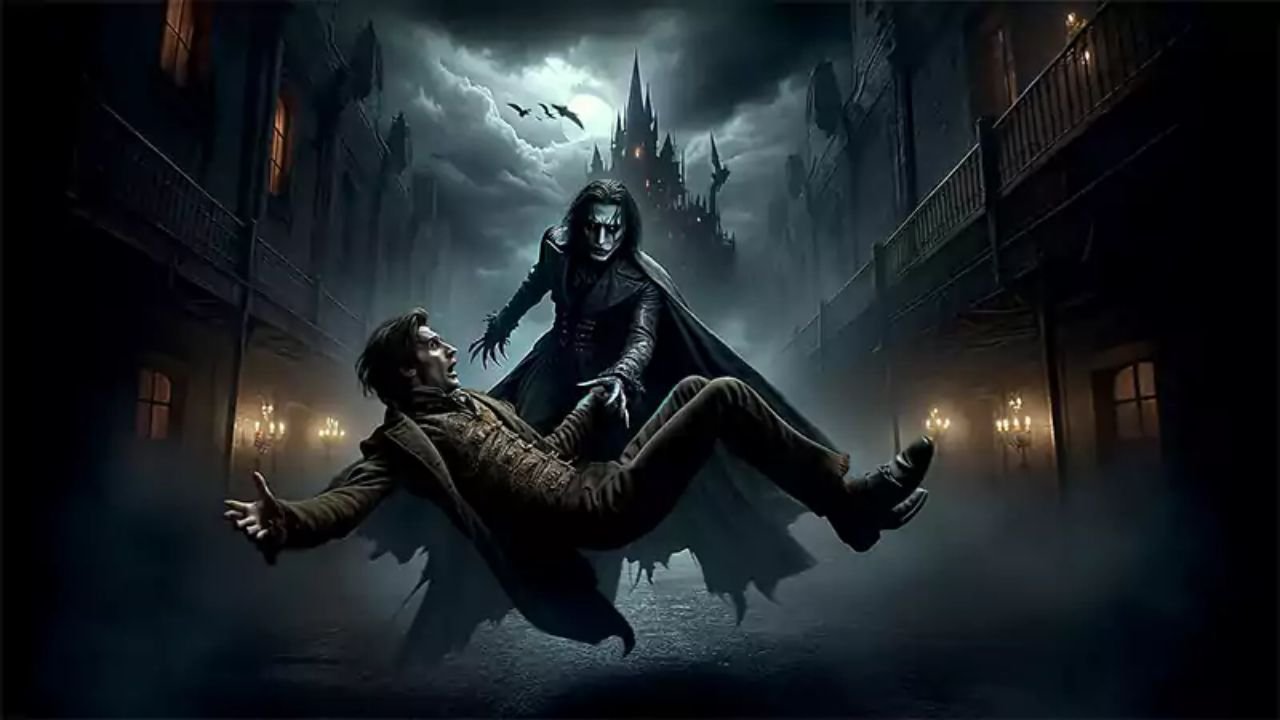In the enchanting world of literature, where words weave magic and stories transport readers to distant realms, the phrase “fell into the arms of a mad villain spoilers” stirs intrigue and excitement among book lovers. This captivating notion conjures images of protagonists entangled with enigmatic antagonists, leading to thrilling narratives that keep readers on the edge of their seats. For mystery readers and literature enthusiasts, understanding the dynamics of this relationship is akin to discovering a hidden treasure chest in a sea of stories.
This article aims to explore the allure of the mad villain archetype, its impact on storytelling, and the thrill it brings to readers. We’ll discuss how spoilers influence reading experiences and ethical considerations within book communities. Additionally, we will examine case studies of novels that perfectly encapsulate this theme, offering insights into crafting compelling villains. Whether you’re a seasoned reader or a budding writer, this exploration promises to deepen your appreciation for the complexity and excitement that comes with falling into the arms of a mad villain.
Understanding the Mad Villain Archetype
Definition and Characteristics of a Mad Villain
A mad villain in literature is more than a mere antagonist; they’re a force of chaos and complexity. Defined by their unpredictable nature, these characters often possess a blend of intelligence, charm, and madness that makes them both fascinating and terrifying. They defy traditional villain stereotypes, challenging protagonists and readers alike with their contradictory motives and layered personalities. Their actions are driven by a mix of personal vendettas, psychological nuances, and sometimes a twisted sense of justice.
Analysis of Popular Novels Featuring Mad Villains
Throughout literary history, mad villains have captivated audiences with their intricate portrayals. Consider Hannibal Lecter from Thomas Harris’s “The Silence of the Lambs.” His sophisticated demeanor, coupled with his sinister motives, creates a compelling character study that captivates readers. Similarly, Shakespeare’s Iago from “Othello” exemplifies the cunning and manipulative traits that define this archetype. By analyzing such iconic characters, we gain insights into the timeless appeal of the mad villain.
Psychological Aspects of Mad Villains
What makes a mad villain so captivating? It’s their psychological depth and unpredictability. These characters often operate under complex psychological frameworks that challenge readers’ moral compasses. Their madness is not merely a plot device but a window into the human psyche, revealing the dark corners of ambition, revenge, or love. This complexity keeps readers enthralled, as they attempt to unravel the motivations behind the madness, making the relationship between reader and villain a thrilling intellectual pursuit.
The Impact of Spoilers in Books
Exploring the Concept of Spoilers
Spoilers have become a double-edged sword in the world of literature. On one hand, they can diminish the suspense and surprise elements that authors meticulously craft. On the other hand, they can pique curiosity and encourage readers to engage more deeply with a story, knowing the twists that await them. In the context of mad villains, spoilers can either enhance the anticipation of their reveal or spoil the intricate plans they set in motion.
Ethical Considerations of Sharing Spoilers
The sharing of spoilers within book communities raises ethical questions. Is it acceptable to reveal crucial plot points without warning, potentially diminishing another reader’s experience? Many argue that readers should tread carefully, respecting others’ desires to experience a story organically. By labeling spoilers clearly and providing content warnings, readers can engage in meaningful discussions while respecting each other’s potential enjoyment of the narrative.
Tips for Engaging with Spoilers Responsibly
For book lovers eager to discuss their favorite plots and mad villains, engaging with spoilers responsibly is key. Consider using spoiler tags or designated forums where spoilers are expected and welcome. This ensures that discussions remain inclusive and respectful of varying levels of familiarity with a story. By fostering a community centered on inclusivity and shared enthusiasm, readers can dissect storylines like “fell into the arms of a mad villain spoilers” without alienating fellow enthusiasts.
Case Studies: Books Where the Protagonist ‘Fell Into the Arms of a Mad Villain’
In-depth Analysis of Specific Novels
Exploring novels where protagonists fall into the arms of mad villains provides rich material for analysis. A prime example is “Rebecca” by Daphne du Maurier, where the protagonist’s entanglement with the mysterious Maxim de Winter unveils layers of deceit and manipulation. Similarly, Gillian Flynn’s “Gone Girl” presents a psychological chess game between the protagonist and a cunning antagonist, challenging readers’ perceptions of truth and fiction.
Plot and Character Dynamics
In these novels, plot and character dynamics play a pivotal role in crafting a gripping narrative. The protagonist’s descent into the world of a mad villain often serves as a catalyst for personal growth or demise. The interactions between characters create a tension that propels the story forward, keeping readers engrossed as they anticipate the next twist. The complex dance between villain and protagonist adds depth and intrigue, making these narratives unforgettable.
Reader and Critical Responses
The reception of such narratives varies widely among readers and critics. Some praise the intricate character development and psychological depth, while others critique the moral ambiguity and unsettling themes. Regardless, these narratives spark vibrant discussions, encouraging readers to reflect on the nature of villainy and heroism. By examining reader and critical responses, we gain a deeper understanding of the enduring impact these stories have on the literary landscape.
The Art of Crafting a Captivating Villain
Insights from Authors
Creating a captivating villain requires a delicate balance of traits that evoke fear, empathy, and intrigue. Authors like J.K. Rowling have mastered this art, as seen in Lord Voldemort’s evolution from a misunderstood child to a power-hungry antagonist. Through interviews and discussions, authors share their approaches to crafting villains that resonate with readers, offering valuable insights for aspiring writers.
Tips for Developing Multidimensional Antagonists
Writers looking to craft multidimensional antagonists can learn from the masters. Focus on building a backstory that explains the villain’s motivations, and allow their personalities to evolve throughout the narrative. Villains should challenge protagonists in unexpected ways, driving the plot forward and forcing characters to confront their own values. By creating morally complex villains, writers can elevate their stories and engage readers on multiple levels.
Resonating with Readers
The most successful villains are those that resonate with readers long after the final page is turned. They leave an indelible mark through their actions, philosophies, and lasting impact on protagonists. By capturing the essence of what makes a villain captivating, authors can craft narratives that not only entertain but also provoke thought and discussion, ensuring that readers remember their stories for years to come.
You May Also Like: Exploring The Flower of Veneration Chapter 1 Magic
Conclusion
In the realm of literature, the allure of falling into the arms of a mad villain captivates readers time and again. From the psychological intricacies of mad villains to the ethical considerations of spoilers, this exploration offers valuable insights for book lovers, mystery readers, and literature enthusiasts alike. By understanding the art of crafting compelling villains and engaging with narratives responsibly, readers can deepen their appreciation for the complex dance between protagonist and antagonist.
For those eager to explore more, consider joining online book communities or attending literary discussions where these themes are explored further. Whether you’re a reader or a writer, the world of mad villains beckons with endless intrigue and excitement. Open the pages and discover the magic that awaits.
FAQs
What is the mad villain archetype in literature?
A mad villain is a complex antagonist defined by intelligence, charm, and madness, captivating readers with their unpredictable nature and layered personalities.
How do spoilers affect the enjoyment of a book?
Spoilers can diminish suspense but also pique curiosity, encouraging deeper reader engagement by revealing plot twists and enhancing anticipation.
What are some popular books featuring mad villains?
Notable examples include “The Silence of the Lambs” by Thomas Harris, “Rebecca” by Daphne du Maurier, and “Gone Girl” by Gillian Flynn.
How can writers create compelling villains?
Writers can craft captivating villains by developing intricate backstories, evolving personalities, and creating multidimensional characters that resonate with readers.
Why are mad villains so popular in mystery and thriller novels?
Mad villains add psychological depth and unpredictable plot twists, challenging readers’ moral beliefs and keeping them engaged in thrilling narratives.











